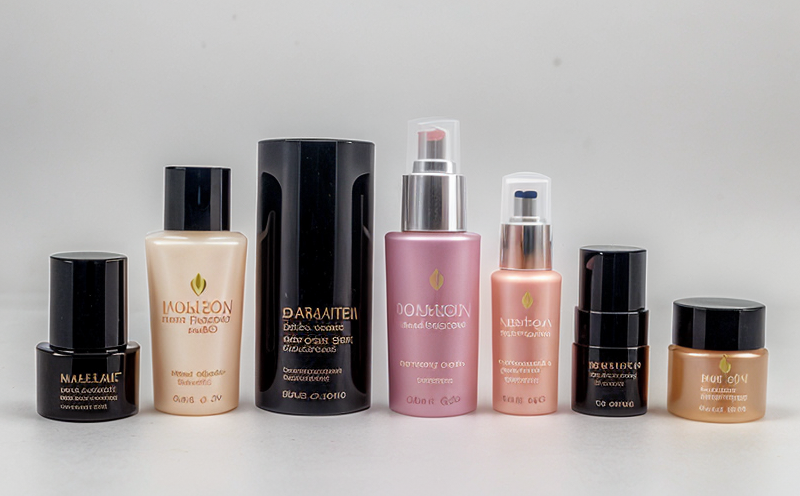Colorant Migration Testing from Packaging to Cosmetics
The process of colorant migration testing is critical for ensuring the safety and quality of cosmetic products. Colorants used in packaging may potentially migrate into the product, affecting its appearance or even posing a health risk if certain thresholds are exceeded. This service focuses on quantifying the amount of colorant that might transfer from the container to the product during storage and use.
This testing is particularly important because it ensures compliance with international standards such as ISO 10324 for packaging materials, which outlines the method for determining colorant migration from containers into food and beverages. It also aligns with FDA requirements on package closure systems and colorants in contact with food.
The testing involves several steps: first, the cosmetic product is filled into a container under controlled conditions to simulate real-world use scenarios. The product then undergoes a prescribed period of storage at various temperatures to accelerate any potential migration processes. During this time, samples are taken at specific intervals and analyzed for colorant content in the product.
The analytical methods used depend on the type of colorants present. Common techniques include ASTM E1928 for determining extractable substances from packaging into food, and ISO 6608 for detecting pigments in cosmetic products. These methods help identify the exact nature of the colorants that have migrated.
The results are reported quantitatively, providing a clear picture of how much colorant has transferred from the packaging to the product over time. This information is crucial for manufacturers to make informed decisions about their packaging materials and processes. By adhering to these testing protocols, companies can ensure not only regulatory compliance but also consumer safety.
Understanding the migration behavior of colorants helps in optimizing packaging design and material selection. For instance, certain types of plastics or coatings may be more prone to allowing colorant transfer than others. By knowing this information early in the development process, manufacturers can avoid costly recalls and maintain a positive brand reputation.
Why It Matters
The migration of colorants from packaging into cosmetic products is not only an aesthetic concern but also has significant implications for consumer health. Regulatory bodies worldwide have strict limits on the amount of certain substances that can migrate into contact with cosmetics due to their potential toxicity or irritation.
- Regulatory Compliance: Failure to meet these standards can result in product recalls, fines, and damage to brand reputation.
- Consumer Confidence: Ensuring colorant migration does not exceed safe limits builds trust with customers who expect high-quality products.
- Product Integrity: Maintaining the integrity of the cosmetic formula is crucial for consistent product performance and effectiveness.
The importance of this testing extends beyond just compliance. It allows manufacturers to innovate by exploring new materials and technologies that can reduce or eliminate migration without compromising packaging functionality or appearance.
Applied Standards
| Standard Code | Description |
|---|---|
| ISO 10324 | Determination of colorants in food, beverages and other products using liquid chromatography. |
| ASTM E1928 | Standard test method for determining extractable substances from packaging into food or liquid foods. |
| EN 30567 | Determination of colorants in cosmetic products using spectroscopy. |
| IEC 62811 | Standard for the safety of medical electrical equipment used in conjunction with cosmetics. |
The choice of standard depends on the specific type of colorant and cosmetic product being tested. Compliance with these standards ensures that all aspects of the testing process are conducted to internationally recognized benchmarks, providing a level of assurance for both manufacturers and regulators.
Industry Applications
- Formulation Development: Identifying colorant migration helps in refining product formulations to ensure stability and quality over time.
- Packaging Design: Understanding how colorants interact with packaging materials aids in creating more effective and safer packages.
- Quality Assurance: Regular testing ensures consistent product performance across different batches and production runs.
- Regulatory Compliance: Ensures that products meet all relevant international standards, avoiding costly penalties and delays.
- Sustainability Initiatives: By minimizing colorant migration, manufacturers can reduce waste and improve the environmental impact of their products.
This service is particularly valuable for companies involved in the design and manufacturing of cosmetic packaging. It allows them to stay ahead of regulatory changes and market demands while maintaining a strong commitment to product safety and quality.





